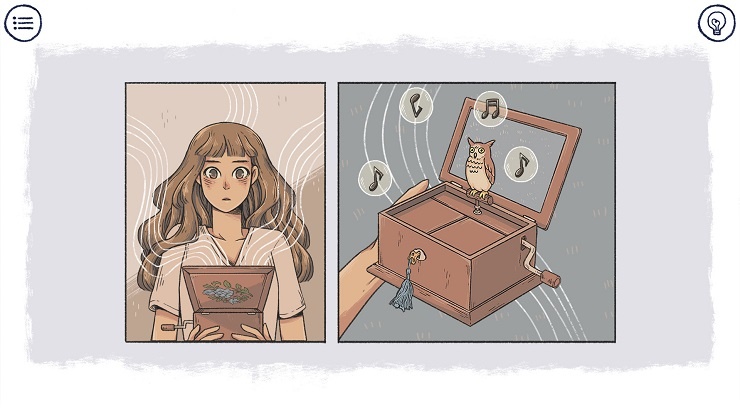I spent a lot of 2020 playing and writing about games that dealt with loss and grief, but even then I wasn’t quite prepared for the story that would unfold in When the Past Was Around.
The game is a love story and an ode to classical music. But, it’s also a moving look at death. As I moved through the memories of the main character, Eda, I realized the game would be less about finding some grand moment or even unlocking the true meaning behind death and grief. It became a game that simply allowed me to go through the motions.

The mechanics are simple. You move through memories and scenes of Eda’s life with her past lover, depicted as an owl, and solve puzzles that unlock more of their lives together. None of the puzzles were too difficult, and they often connected in a way that felt like an extended metaphor. Experiencing a memory and then going back to the scene of it to find pieces that would help progress in another memory was as interesting as it was sad. These memories don’t fade, but going back into a kitchen that was once full of warmth as Eda and Owl had tea together, only to toss the room in search of a small puzzle piece left me feeling more sentimental than I expected.
The memories Eda had with her deceased lover were gentle and still a bit sad. The game beautifully portrayed the ways fond memories become bittersweet when the person you shared them with is no longer around. All we have are those moments, even the bad ones, and whether it was a first meeting or just a small trip to the beach, each memory I explored was heavy with importance. It took me around an hour to get through When the Past Was Around, but it was still one of the easiest games to get through despite the fact that it never held its punches.

The back and forth movement through memories and areas filled with Eda and the Owl’s life were the most pivotal parts of the game for me. Going through Eda’s beautiful home before and after painful memories, only to ransack her home, felt good. It felt bad. It was immersive. Looking for a key, or the handle for a music box, meant throwing books on the floor, flipping up a rug, knocking plants over. It felt like a catharsis as much as it felt like a temper tantrum that comes when you can’t or don’t want to acknowledge what’s truly wrong.
When the Past Was Around is about grieving as much as it is about moving on while still respecting the life you lost. I got to experience as much as Eda’s anger and sadness as I did her love and inquisitiveness. Finding a new love and slowly losing them within the game was done all without dialogue. I was able to freely experience these moments as I wanted to. Losing a loved one is impossible to imagine, and the game never took advantage of that grief. It was one of those few instances where experiencing grief in a game felt necessary, and I think that was the point. That accepting sadness and beginning to move on while still understanding that life has changed is a part of the process. It showed that you are able to continue living without feeling as though you’re forgetting about or disrespecting the life and death of a loved one.
When the Past Was Around is available now on the Nintendo Switch, PlayStation Store, Microsoft Store, and Steam.


It’s very interesting game. I liked